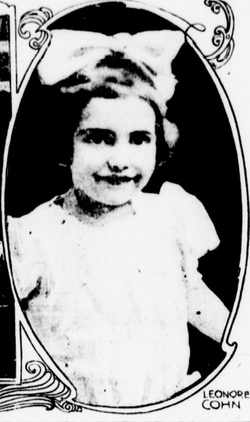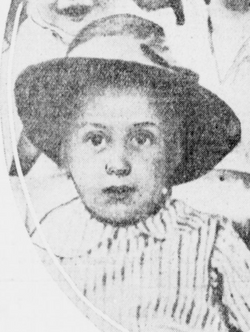In 1884, 23/24-years-old Annie Yates was living at No. 12, Burton-Crescent St. (now known as Cartwright Gardens) in London, England. It was a home that rented out furnished apartments to women. Annie's room was on the first floor in the back. At the time Annie was working as a prostitute. Annie's past is a bit mysterious. It's believed that Annie Yates was an alias as a friend said that her name was Mary Anne Marshall, and her friends were in Reading. One article refers to her as Mary Anne Yates.
On the night of 8 March 1884 Annie Yates and another lodger Annie Ellis this was not unusual for the pair. Around 1 a.m. The two would part at Euston road as Annie Yates had gotten into a conversation with a well-dressed man. It wouldn't be until around 2 a.m. that Annie was heard coming home with a man who is assumed to be the same man she was seen with earlier.
Around 3 a.m. screams were heard from Annie's room, but it wasn't unusual. The other lodgers said that she would go into bouts of hysteria and those sounded similar to her screaming that night. A considerable time after the screaming sounds of a man going downstairs and leaving the house was heard. This was also not an uncommon sound in the place so nobody went to check.
Annie would not end up coming down for breakfast. Between 12 p.m. and 1 p.m. Annie Ellis went upstairs to check on her friend. The door was already open a crack so Annie E. went inside. What she saw was the bedding piled up on something. Seeing Annie's foot sticking out from underneath Annie E. pulled them off.
Annie was laying on her stomach. She was partially dressed and was laying in a pool of her blood. She had a serious gash on the left side of her head above her ear and had a towel tightly tied around her mouth with the knot on the back of her head. Annie E. noted that there were bruises on the back of her legs. It was found that there was blood on the wall bed and towel.
The alarm was raised to Mrs. Apex the landlady of the house. Mrs. Apex would send for medical help and notified the police station. Unfortunately, Annie had been dead for hours and it was believed the towel wrapped around her mouth had led to her suffocating.
Police searched for the weapon used to hit Annie, but it was not found. It's likely the wound on her head knocked her out and then the towel was tied around her mouth while she was unconscious It's unknown if he did intend to kill Annie or to silence her in case she woke up.
The room had also seemed to have been ransacked. It was found that the killer had possibly stolen a dark leather purse with a clamp and a gold ring Annie was wearing that night/morning was gone. Annies ring was described as 9-carat gold with three gems, a turquoise gem in the middle with two pearls on either side of it.
The man last seen with Annie was around 25-years-old. He was described as being fair, with a medium height. He was wearing a black felt hat, brown cutaway coat, he seemed to have a respectable appearance.
According to Wikipedia, this murder was never solved.
SOURCES:
Wikipedia
The Times 9 March 1884
The Bristol Mercury and Daily Post, Western Countries and South Wales Advertiser 15 March 1884
The Preston Chronicle and Lancashire Advertiser 22 March 1884











